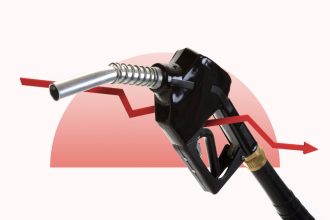Key takeaways
-
Your credit utilization ratio is expressed as a percentage and determined by taking the amount you owe on a credit card and dividing it by your credit limit.
- If you currently owe $5,000 across total credit limits of $10,000, this means you have a total credit utilization ratio of 50 percent.
- Most experts recommend keeping this ratio below 30 percent for the best results for your score, but keeping it lower than that can be an even better idea.
When it comes to improving your credit score, having a good credit utilization ratio is more important than you think. This component of your credit is second only to payment history in importance to your FICO score (weighing in at 30 percent) and it’s also considered “highly influential” to your VantageScore.
But how low is “low”? Here’s what this key scoring factor means and some tips on how to get your credit utilization in the best possible range for your credit.
What is credit utilization?
Credit utilization is how much you owe across all lines of credit you currently hold compared to your total credit limit. If you divide the amount you owe on a credit card by its credit limit, you will get your utilization ratio. To quickly determine this percentage, check out Bankrate’s credit utilization ratio calculator.
For example, spending $500 on a credit card with a $5,000 credit limit equals a 10 percent utilization rate (500 divided by 5000 equals 0.10, or 10 percent). This is the percentage of credit used of the total amount of credit offered by your credit card company.
The same goes for when you have multiple debts on multiple credit cards. If you owe a total of $4,500 on three credit cards that have total credit limits of $10,000, for example, your overall credit utilization ratio would be 45 percent.
This underscores the fact that credit utilization is measured both individually and collectively. While the utilization on specific cards can play a role in your score, the overall number can also have a dramatic impact on your credit health. For this reason, it is always a good idea to know what your balances are on all of your cards.
What is a good credit utilization ratio?
Most expert sources recommend keeping your credit utilization ratio below 30 percent of your available credit limits for the best results. For example, the Consumer Financial Protection Bureau (CFPB) says the following about utilization:
“Keeping a low credit utilization ratio—under 30 percent—shows lenders you’re responsible and have available credit.”
However, many individuals with excellent credit scores may show utilization in the single digits, or even close to zero. This goes to show that having a low utilization is good, but it can fall within any range below 30 percent and still be a boon to your score.
Also, this measure is one of many used in the scoring algorithm. Your credit score may look different from someone else’s depending on these other factors. According to the credit scoring matrix — your payment history is most important to your FICO score at 35 percent. There is also your credit mix (10 percent), your credit history (15 percent) and new credit (10 percent) to consider.
Editor’s take
Credit utilizations can also vary widely from month-to-month: the score you get today can be different tomorrow based on what has hit your credit report in the meantime. If you make a large purchase but pay it off fairly quickly, your utilization will go down once that payment hits your credit report.
Is there an ideal credit utilization ratio?
The experts’ recommendation to keep your percentage below 30 percent of your available credit is just a guideline, but myths still abound when it comes to your credit score and debt.
For example, the CFPB mentions the common myth that carrying debt can help your credit score, then goes on to debunk it:
“Myth: Carrying a balance on my credit cards will improve my credit score,” they write. “Fact: Paying off your credit cards in full every month is the best way to improve a credit score or maintain a good one.”
Ultimately, they’re saying that the ideal credit utilization ratio can be anywhere below 30 percent of your available credit but that you do not need to carry debt to score well in this category. In fact, you can have a credit utilization ratio of 0 percent if you are debt-averse and still have an excellent credit score.
Why is high credit utilization bad?
A high credit utilization typically means you are close to maxing out your credit cards, and that signals a red flag to lenders. The Fair Isaac Corporation (FICO) lays this point out clear on its website, saying that “if you are using a lot of your available credit, this may indicate that you are overextended—and banks can interpret this to mean that you are at a higher risk of defaulting.” A negative credit card balance has a similar effect on your score.
On the flip side of that, you can show credit bureaus and lenders you’re responsible with credit by keeping your debt and utilization low. Of course, this is in addition to other steps you can take to improve your credit, like paying all your bills on time and using different types of credit to improve your credit mix. If you’re having trouble paying down your debt, a debt consolidation loan or balance transfer card might help you pay it down.
How can I improve my credit utilization ratio?
The primary way to improve your credit utilization ratio is to pay down or pay off your bills. While this sounds simple, it’s not always easy, depending on your income and how much debt you’ve accrued on your cards.
Also, once you pay off a card, don’t close it unless you have a good reason to do so. Having a surplus of available credit can help you keep your utilization ratio low, and the card also contributes to your credit history, which makes up 15 percent of your credit score. You may need to use the card occasionally to keep from having it closed, but that is fairly easy to do by using it for purchases you already plan to make (like groceries or gas).
You can also apply for new credit, which will improve your ratio if granted. However, you shouldn’t apply for a new credit card if you don’t have a need for it.
The bottom line
When it comes to your credit, the benefits of higher scores can equal better rates for your next big purchase, lower mortgage rates and other preferential treatment. Fortunately, you can get your credit score where you want it to be with some simple steps like paying all your bills on time and keeping your credit utilization ratio below 30 percent.
Also remember that having a perfect credit score shouldn’t be the goal, and that you won’t see many real-life implications if your score fluctuates from 750 to 800, or even at the highest possible score of 850. As long as you’re using credit responsibly and carefully, your score will naturally improve into a range that improves your finances for the long haul.
Read the full article here














